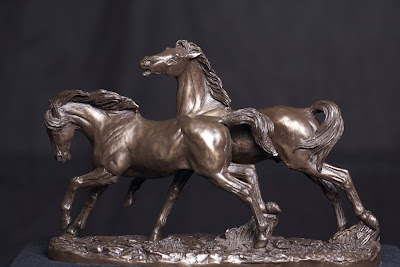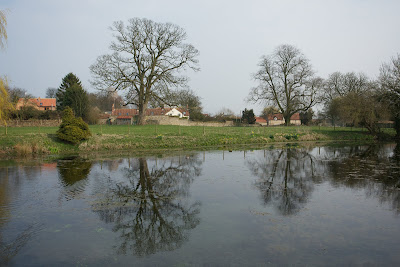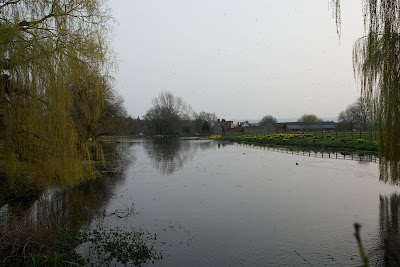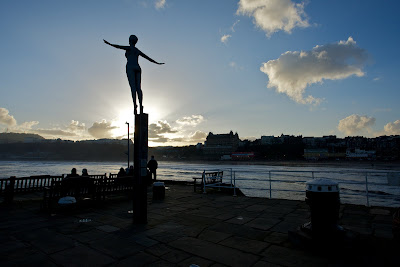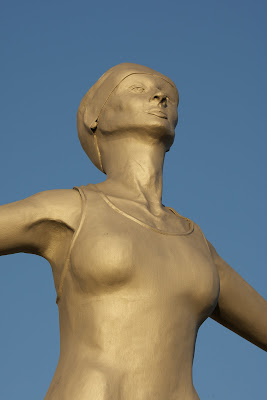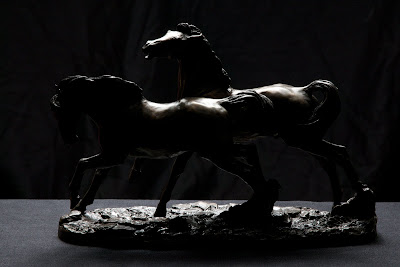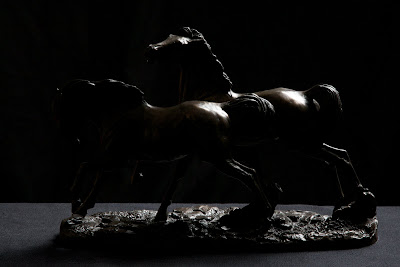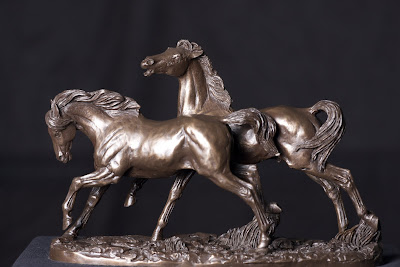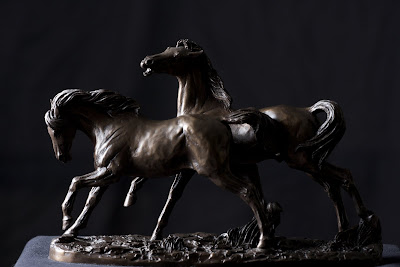Thursday 31 March 2011
OCA Course: Variety With a Low Sun.
1. Back Light.
2. Edge Light.
3. Frontal Light.
4. Side Light.
OCA Course: Light Through the Day 2.
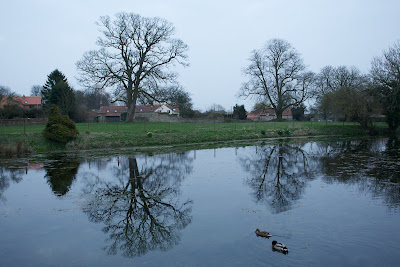
OCA Course: Light Through the Day.

Sunday 6 March 2011
OCA Course: Assignment 4: Lighting Techniques - Images
OCA COURSE
THE ART OF PHOTOGRAPHY
IAN GLAVES
504473
ASSIGNMENT 4: Applying lighting techniques.
I chose as my subject for this assignment "Diving Belle", one of two sculptures in Scarborough. This one is sited on the end of the harbour pier, the other being in the main shopping area of town. The two main reasons for choosing it are the position – it's in good light and faces south-east and one can walk round it, and the grey finish, which I thought would be a good canvas for the changing light conditions and techniques. I visited it on three occasions, two in the afternoon on clear sunny days to catch the fading light of sunset, and once at night on a slightly cloudy/hazy but fine evening. She stands about 18 feet above the ground, so all the views are from below. A view from the adjacent lighthouse would be good but access isn't available. Despite her rather severe expression, I think she is rather nice (apart from the girder she is mounted on), and an asset to the town. All images were taken with the aid of a tripod, and all were RAW file originals to allow better post processing control.
- Location: Canon EOS 1D Mk111, 17-40mm lens @ 17mm, ISO 200, F8@1/500sec., evaluative metering, daylight WB. This image gives an overall view of the location against a setting sun, and is for information only to set the scene, but would be appropriate for the "Shape" category as it is a good silhouette.
- Shape 1: Canon EOS 1D Mk111, 17-40mm lens @ 40mm, ISO 200, F8@1/750sec., evaluative metering, auto WB. This is a near silhouette which shows off the overall shape of the statue, with just a feint hint of rim lighting to accentuate this.
- Shape 2: Canon EOS 40D, 17-40mm lens @ 40mm, ISO 200, F11@1/640, evaluative metering, auto WB. I deliberately under-exposed by 2ev to give a more dramatic appearance to the sky and shadow/highlight contrast, but this proved a bit much, so brought it back 1ev in post processing. I think the highlight "rim" lighting gives a good impression of shape.
- Form 1: Canon EOS 40D, 17-40mm lens @ 31mm, ISO 200, F11@1/1000sec., evaluative metering, auto WB. Again, I deliberately underexposed 2ev and corrected by 1ev. The frontal lighting shows the folds of clothing, skin creases and muscular definition of the diver, giving depth to the image. The setting sun imparts a hint of gold which contrasts nicely with the good sky.
- Form 2: Canon EOS 1D Mk111, 17-40mm lens @ 40mm, ISO 200, F8@1/350sec., evaluative metering, auto WB. A similar shot to the previous one but earlier on a different day. The light is flatter and no exposure compensation was used. There is still good modeling giving depth and form to the statue. I like the inclusion of the moon to add a little interest to the sky.
- Form 3: Canon EOS 1D Mk111, 100-400mm lens @ 100mm, ISO 200, F8@1/250sec., evaluative metering, auto WB. The oblique and fairly low sun has really brought out the form of the face and chest of the diver.
- Texture 1: Canon EOS 1D Mk111, 100-400 lens @ 285mm, ISO 200, F8@1/125sec., evaluative metering, auto WB. Moving in closer with the tele-zoom begins to show fine detail of the surface texture of the statue, highlighting the brush strokes of the paint, skin lines and facial features, all brought out by the sharp oblique lighting from the point source of the sun.
- Texture 2: Canon EOS 1D Mk111, 17-40mm lens @ 25mm, ISO 400, F9.5@9sec., minus 1ev, spot metering, auto WB. This is a mixture of floodlighting (courtesy of Scarborough Borough Council) from two directions (a kind of ready-made studio!), and the long exposure to give some background information. The 1ev reduction was as a result of experimentation so as not to burn out the statue, and the exposure was determined by spot metering on her buttocks! The modeling provided by the two floodlights of different intensity coming from front and back shows the overall texture of the statue against an interesting background of moon and sea-front lights.
- Colour WB Daylight: Canon EOS 1D Mk111, 100-400mm lens @ 180mm, ISO 200, F8@1/180sec., evaluative metering, daylight white balance. This is essentially a standard daylight image with the sun behind cloud that gives a base-line for the three that follow. There is just a hint of blueness to the paint as a consequence of the blue sky.
- Colour WB Shade: Details as above but exposure F8@1/350sec, after the sun came out and with the white balance set to shade. The difference in colour is striking – the statue is now gold.
- Colour Tungsten: Canon EOS 1D Mk111, 17-40mm lens @ 31mm, ISO 1600, F5.6@1sec., spot metering, auto white balance. Despite the auto white balance, the tungsten light is very yellow and the camera hasn't coped fully with trying to convert to daylight. This has imparted a rather nice golden glow to the diver, complimented by the similarly coloured but darker sky.
- Colour Flash: Canon EOS 1D Mk111, 17-40mm lens @40mm, ISO 400, F5.6@1sec., minus 1.5ev, spot metering, electronic flash (no compensation), auto white balance. To make sure the sky was black, I set the camera exposure to minus 1.5ev whilst leaving the flash unchanged, and metered off her buttocks again. The auto white balance has resulted in an overall silver colour, with just a hint of gold from the tungsten spots spilling onto the statue.
For me, the take home message here is that with a bit of forethought and planning markedly different results can be achieved by studying the position, angle and colour of daylight and applying different white balance settings. Using artificial light at night, whether it is provided free (as with the floodlights on the pier), or with flash, can produce some really dramatic differences to ones photographs.
The Lighting Angle (Part 2)
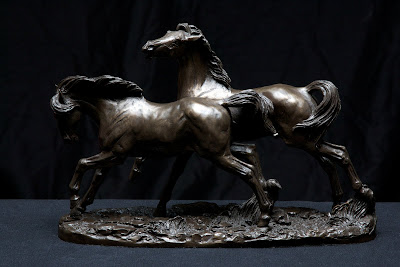
Saturday 5 March 2011
The Lighting Angle (Part 1)
